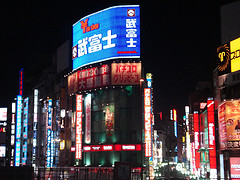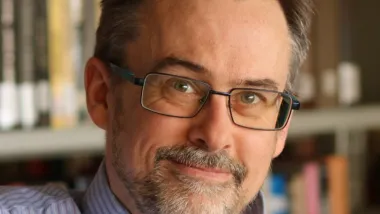The Fukushima reactors and their associated buildings have been exploding, melting and burning for not quite a week yet, but already the sense of déjà vu is inescapable.
The Fukushima
reactors and their associated buildings have been exploding, melting and
burning for not quite a week yet, but already the sense of déjà vu is
inescapable.
As I commented in this space last June, the oil gusher in
the Gulf of Mexico had me checking the news
compulsively to see if the well had been capped, and wondering despairingly if
we were watching the end of the world unfold invisibly below us. Now, we once again find ourselves watching
helplessly as an environmental catastrophe of our own making unfolds in slow
motion, and worrying how its contamination will affect the immedate area and
rest of the world, including ecosystems, the food chain and public health.
Already there has been a good deal of discussion about the
extent to which the events at Fukushima
will derail the so-called nuclear "renaissance", and perhaps speed up investment in renewable energy. However, this morning on the radio a young woman in Tokyo really helped put
the incident into perspective for me. She told the CBC reporters that she was
determined to finish her schooling so that she could help her country rebuild.
Left unsaid was that she no longer thought of her education as a path to pursue
a personally fulfilling career; instead she was prepared to sacrifice such
rewards for her fellow citizens.
More remarkably however, she observed how Tokyo's famous
neon landscape had dimmed as a part of the country's planned rolling blackouts,
so as to conserve energy – and she thought that, if the nuclear disaster helped
her people stop wasting so much energy then perhaps some good would come out of
it.
I hadn't been previously aware of the extent to which Japan had
invested in nuclear power: 55 reactors in 17 sites providing about a third of
the nation's electricity. When we think of the Japanese cityscape,
throbbing with neon lights in every direction, it is sobering – and now, even
sickening – to think of what the cost of such extravagance may turn out to be.

While beautiful, these displays entailed lethal risks that hardly crossed our minds. Yet, had a regime of greater conservation, renewables and efforts to reduce light
pollution been a part of that country's energy policy for decades, would it
really have been necessary to to build 55 reactors? Would there even be reactors
burning now at Fukushima?
I realize this is being highly speculative. And I certainly
don't mean to single out Japan
for being uniquely profligate with its energy consumption. My own Canada clearly stands out shamefully in this regard, with our citizens ranking among the greatest per capita energy users in the world.
But Fukushima
-- like the Deepwater Horizon blowout before it -- shows that our energy policy debates need to include the potential for global catastrophe
in the balance sheets. Is maintaining our energy consumption as it presently
stands really worth running such terrible and terrifying risks? Is all of the
future to pay for our ability to run the lights all night long and power our "vampire" appliances?
An excellent occasion to start this conversation in earnest would be this year's Earth Hour, Saturday March 26th at 8:30 pm, as part of a global campaign to promote awareness and energy conservation. In solidarity with the Japanese, we too can shut down our power consumption, and consider its consequences.
As our young woman in Tokyo
shows us, times such as these call upon us to sacrifice. Not all of us will be rolling up our sleeves and helping to rebuild coastal Japan, but surely, when it comes to
our energy usage and energy policy-making, we can give more thought to the ultimate costs
of our lifestyles, and who is paying them.
[Image: freyapix (flickr)]

Analysis: Cybertruck Fatality Rate Far Exceeds That of Ford Pinto
The Tesla Cybertruck was recalled seven times last year.

National Parks Layoffs Will Cause Communities to Lose Billions
Thousands of essential park workers were laid off this week, just before the busy spring break season.

Retro-silient?: America’s First “Eco-burb,” The Woodlands Turns 50
A master-planned community north of Houston offers lessons on green infrastructure and resilient design, but falls short of its founder’s lofty affordability and walkability goals.

Test News Post 1
This is a summary

Analysis: Cybertruck Fatality Rate Far Exceeds That of Ford Pinto
The Tesla Cybertruck was recalled seven times last year.

Test News Headline 46
Test for the image on the front page.
Urban Design for Planners 1: Software Tools
This six-course series explores essential urban design concepts using open source software and equips planners with the tools they need to participate fully in the urban design process.
Planning for Universal Design
Learn the tools for implementing Universal Design in planning regulations.
EMC Planning Group, Inc.
Planetizen
Planetizen
Mpact (formerly Rail~Volution)
Great Falls Development Authority, Inc.
HUDs Office of Policy Development and Research
NYU Wagner Graduate School of Public Service


























